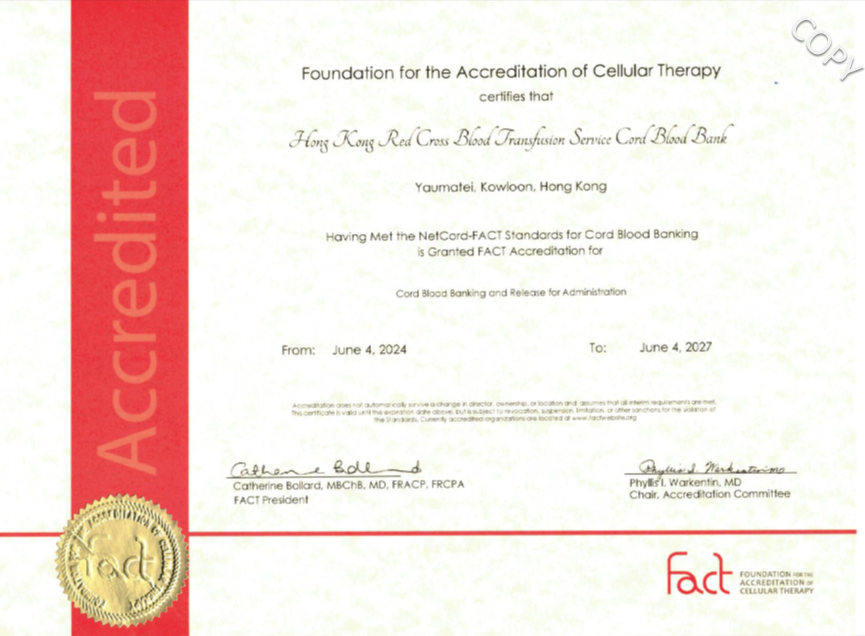
Cord Blood Bank





The Hong Kong Red Cross Blood Transfusion Service (BTS) established the first public cord blood bank in Hong Kong in 1998 to collect and process cord blood units for haematopoietic stem cell transplant use.
The Hong Kong Red Cross Blood Transfusion Service Cord Blood Bank has maintained the accreditation status of the NetCord-Foundation for the Accreditation of Cellular Therapy (FACT) since 2013, indicating full compliance with the most comprehensive international standards in the field as verified by rigorous peer-reviewed inspections, which recognised our Cord Blood Bank’s achievement in production of cord blood units with quality up to international standards for clinical use.
As of December 2021, more than 10,000 qualified cord blood units have been stored in Cord Blood Bank for transplantation and therapeutic use.

Cord blood is the blood collected from placenta immediately after a baby is born. In the past, it is disposed along with the placenta as clinical waste. During the 60~70s, scientists discovered that the cord blood was rich in blood cell progenitors (haematopoietic stem cells), which, like bone marrow, can be infused into patients for treatment of various blood diseases such as leukaemia and thalassemia. Since then, cord blood units are collected, processed and stored for clinical use.
|
|
|
|
|
|
|
| Collection of cord blood will not cause any harm to either the mother or the baby. Neither will it disturb the birth process as the collection is normally undertaken after the baby is delivered. |
|
|
The BTS manages cord blood units on the same principle as other blood products, i.e. the BTS will provide patients with blood products for clinical use whenever they need it. No one has priority over another. In addition, cord blood donors cannot ask the BTS to return their cord blood units to them for private use.
Cord blood collection service has been suspended since January 2022.
For enquiries about cord blood processing, storage and application, please contact us by email (rcbts@ha.org.hk).

 Equipment for processing and testing of cord blood units
Equipment for processing and testing of cord blood units Equipment for processing and testing of cord blood units
Equipment for processing and testing of cord blood units Liquid nitrogen containers for storage of cord blood units
Liquid nitrogen containers for storage of cord blood units Liquid nitrogen containers for storage of cord blood units
Liquid nitrogen containers for storage of cord blood units Dry shipper for transportation of cord blood units
Dry shipper for transportation of cord blood units Cord blood units after processing
Cord blood units after processing Cord blood collection from placenta
Cord blood collection from placenta Cord blood collection from placenta
Cord blood collection from placenta